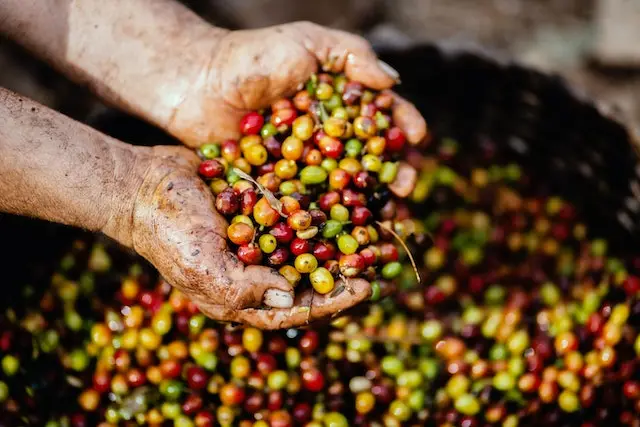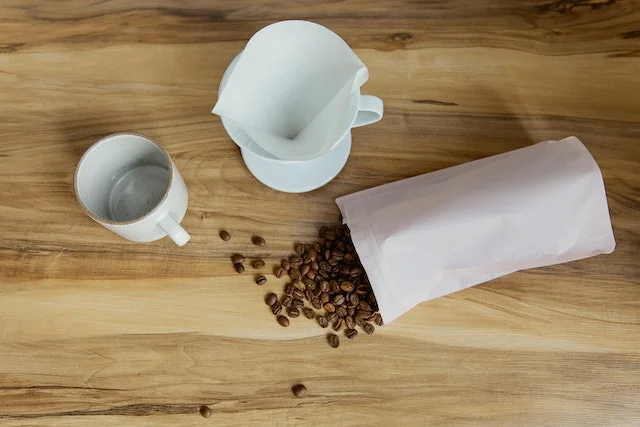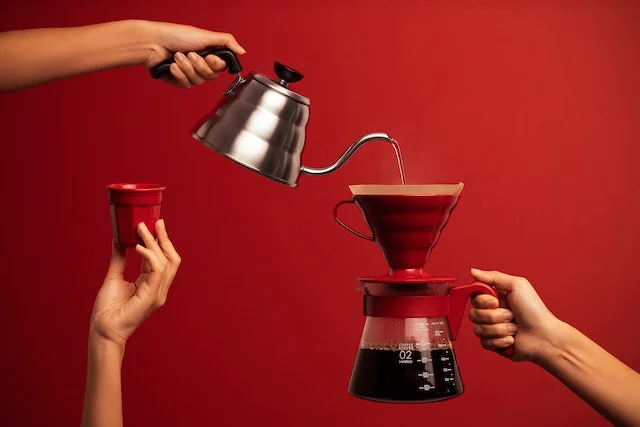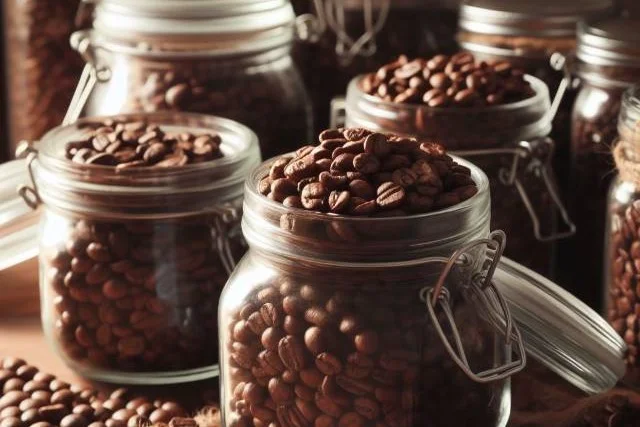Should coffee beans be oily? Shiny Beans Investigation
Coffee is loved by many for its aroma and taste. It’s a daily habit for people worldwide. With specialty coffee growing, there is increasing interest in the brewing process. One debated topic is whether beans should be oily. This has sparked much lively discussion.
There are several factors and facts about oily beans to help decide if oil is desirable. Oily beans depend on personal preferences around flavor, brewing needs, storage life, and health considerations. Understanding how oil impacts coffee helps pick the best beans for individual tastes.
Should Coffee Beans Be Oily? Kay Takeaways
- Oily Beans Determinants: The presence of oil on coffee beans is determined by factors like the bean type, roast level, brewing method, and storage conditions. Understanding these factors is crucial for choosing the right beans.
- Oily vs. Dry Beans: Oily beans offer a rich flavor but have a shorter shelf life, ideal for espresso and French press. Dry beans are better for pour-over methods, extracting complex flavors.
- Health Factors: Coffee oils can impact cholesterol levels. Using paper filters can help reduce this effect, but more research is needed.
- Personal Preference: The choice between oily and dry beans depends on individual taste, brewing methods, equipment, shelf life, and health considerations. Experiment to find your ideal match.
Coffee Bean Basics

First, some basics on coffee beans. The two main varieties are Arabica and Robusta. Arabica tends to have more sweetness while Robusta contains more bitterness and higher caffeine. Coffee beans contain oils, sugars, proteins, caffeine, and antioxidants.
Roasting transforms these compounds, affecting the bean’s appearance, aroma, and flavor. More details on this process later.
Arabica vs Robusta
While similar in many ways, Arabica and Robusta beans each shine in their own right through distinct flavors and strengths. The two types of beans differ in:
- Flavor: Arabica is sweeter, Robusta is more bitter
- Caffeine: Robusta has more
- Quality: Arabica higher quality bean
- Hardiness: Robusta is more disease resistant
Bean Composition
Coffee beans are complex, containing an array of oils, sugars, proteins and other compounds that transform when roasted. Coffee beans contain:
- Oils: Impart flavor, aroma, mouthfeel
- Sugars: Caramelize during roasting
- Proteins: Break into aromatic compounds
- Caffeine
- Antioxidants
Roasting Process
Through Maillard reactions and physical changes, roasting utilizes heat to unlock coffee beans’ full flavor and aroma potential Roasting coffee beans involves:
- Applying heat breaks down compounds
- Maillard reactions produce new flavors
- Oils migrate to the surface
- Sugar caramelization
- Time and temperature change the flavor
The Oily Bean Phenomenon

Oily coffee beans have a shiny, greasy sheen. This contrasts with dry beans having a matte finish. Where does this visible oil come from? Why are some beans oily while others not? Let’s examine the biology behind this phenomenon.
Understanding Oily Beans
Oily beans have surface oil from roasting. This gives a slick look compared to dry beans. The oils coat the bean, affecting taste and storage. This oil migration occurs later in roasting.
Science Behind Oily Beans
Beans have internal oils. When roasted, pressure forces oils to the surface. More time and heat cause more oil. The oils contain aromatics influencing flavor.
Visual Appeal vs Flavor
Oily beans may look appealing visually. But light roast dry beans can taste complex. So oil alone doesn’t mean better taste.
The Roasting Factor
More roasting causes more oil. Dark roasts have more oil from high heat. But roast level affects flavor separately from oil amount.
Comparing Oily and Dry Beans

Oily and dry beans differ in:
Taste Profiles
| Taste | Oily Beans | Dry Beans |
| Flavor | Rich, bold | Complex, bright |
| Mouthfeel | Heavy, smooth | Lighter, acidic |
Brewing Differences
- Oily: Can over-extract, best for short brews
- Dry: Optimal for pour-over, controlled extraction
Oily speeds extraction while dry beans are slower.
Shelf Life
- Oily: Go stale faster in 2-4 weeks
- Dry: Last 1-2 months with some freshness
Oil coating makes oily beans go stale quicker.
What Determines Oily Beans?

Many factors influence oil amount:
Bean Type
- Arabica gets oily more easily with more oils
- Robusta needs darker roast to get oily
Roast Level
- Light roast keeps structure, little oil
- Medium roast sees some surface oil
- Dark roast has most oil from high heat
Brewing Method
- Espresso and French press work well with oil
- Pour over and cold brew suit dry better
Storage Conditions
- Heat and light degrade oils faster
- Cool, dark storage preserves oils
Pros and Cons of Oily Beans

Oily beans have advantages but drawbacks too:
Potential Advantages
- Rich, smooth flavor
- Allows quality espresso crema
- Unique brewing opportunities
Possible Disadvantages
- Short shelf life after roasting
- Can clog up burr grinders
- May require more cleaning
- Stale beans still appear oily
A Brewing Experiment

I tested oily vs. non-oily beans:
Flavor Differences
I cupped beans roasted to different levels to evaluate flavor differences:
| Roast Level | Tasting Notes |
| Light roast | Complex, floral, bright |
| Medium roast | Balanced, moderately strong |
| Dark roast | Rich, heavy, bittersweet |
While oily had a bolder flavor, light roast had intricacy.
Brew Method Suitability
Testing beans on different brew methods showed:
| Method | Oily Bean Suitability |
| Pour Over | Filter clogging |
| French Press | Accentuated richness |
| Cold Brew | Muddied flavor |
| Espresso | Best crema production |
Oily worked well for espresso and French press. Others preferred dry.
Industry Trends and Views

Looking at industry practices and consumer opinions sheds light on perspectives about oily beans:
Specialty Coffee Trends
Many specialty roasters use light and medium roasts with less oil. This allows complex flavors to shine without muting notes.
Consumer Preferences
- Specialty buyers view oil as over-roasted
- Traditional buyers associate oil with quality
Preferences depend on flavor priorities.
Debunking Myths

The Dark Roast Myth
Darker roasts cause more oil. But roast level doesn’t dictate oil amount directly.
Oily Beans and Freshness
Oil presence alone doesn’t indicate freshness. Old beans can still appear oily from roasting. Quick use is ideal but oil itself doesn’t mean fresh.
Roasting Techniques
Roasters use techniques to control oil:
Light Roast
- Shorter roast before oil rises
- Fast cooling stops the process
Dark Oily Roast
- Longer roast allows oil to emerge
- Slow cooling maximizes oil
Time, temperature, and cooling are tailored to meet oil targets.
Oily Beans’ Espresso Impact

Espresso’s high pressure makes the oil level significant:
Espresso Crema
Oily beans emulsify oils needed for thick, rich crema. Dry beans can’t achieve the same quality crema.
Ideal Espresso Grind
Superfine espresso grind needs oily beans. The oil allows an ultra fine grind not possible with dry beans.
Brewing Tips for Oily Beans

Tips for optimizing oily beans:
- Use a burr grinder for enhanced flavor
- Grind right before brewing if possible
- Rinse filters thoroughly to prevent clogging
- Regularly clean the burr grinder to avoid buildup
- Backflush espresso machine to clear oil residue
Proper maintenance prevents issues when brewing oily beans.
Storing Oily Beans

Due to their shorter shelf life, oily beans need:
- Airtight, opaque container
- Storage in a cool, dark space
- Only buy beans for 1-2 weeks
- Freeze extras to maintain freshness
Fast use and freezing prevents flavor decline.
Potential Health Considerations
Some potential health impacts related to bean oils:
Coffee Oils and Cholesterol
- Oils like diterpenes cafestol and kahweol may raise LDL and total cholesterol in some individuals
- Paper filters help capture most of these oils in brewing
Evaluating Possible Risks
- Unfiltered brew methods like French press contain higher levels of these oils
- More research still needed on links to increased cholesterol
Using paper filters and moderating intake can help mitigate possible risks tied to oils.
Conclusion
The Oily Bean Verdict
The research shows oily beans offer bold flavor yet issues. For manual pour-over and optimizing fruity notes, dry beans may be better to avoid over-extraction. However, for espresso and French press, bean oil is favorable. Your personal taste and primary brew methods should inform your choice between dry or oily beans.
Personal Preferences Matter
Choosing oily vs non-oily coffee depends on your priorities around flavor, brewing needs, equipment, shelf life, and health considerations. See how oily beans fit with your particular tastes and habits. When picking beans, remember there is no right or wrong amount of oil – choose what works for you. Experiment to find your perfect bean oiliness.
Should Coffee Beans Be Oily FAQs
Not necessarily. Oily beans offer bold flavor but go stale faster. Dry beans extract fruity notes well. The ideal amount of oil depends on your taste preferences and brewing methods.
Bean variety, roast level, and roasting techniques determine oil content. More time and higher heat draw out internal oils to coat the surface. Dark roasts are oilier than light.
Yes, bean oils help produce espresso’s thick crema foam. Oily beans also allow an ultra-fine espresso grind not possible with dry beans. So oiliness benefits espresso.
No, the roast level does not directly correlate to health benefits. Light roasts retain some antioxidants while dark roasts may contain oils affecting cholesterol. Moderation and brewing methods are key.
Use an airtight, opaque container and keep beans in a cool, dark place. Only buy enough for 1-2 weeks max. Freeze excess oily beans to maintain freshness since they go stale faster.








